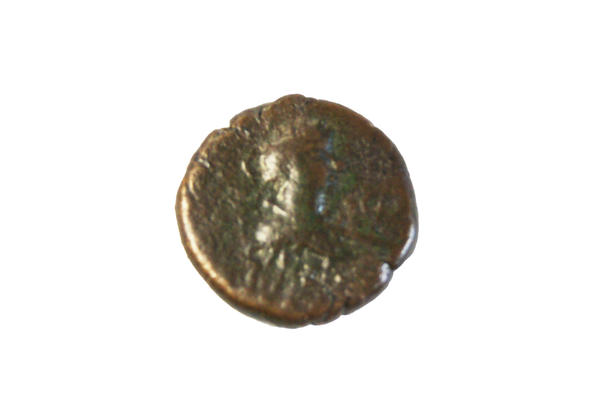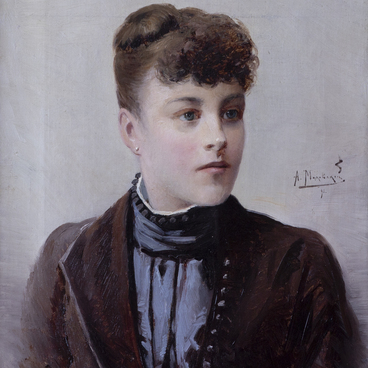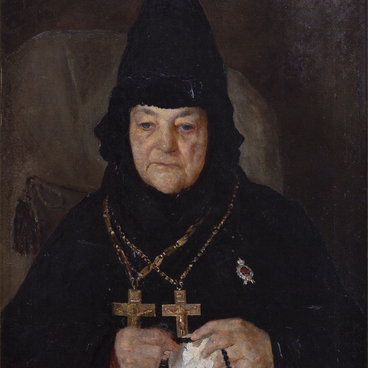At the end of the summer of 2012, at the settlement of the Hunnic time of the late 4th — early 5th centuries in the Zadonsky district of the Lipetsk region, a local treasure hunter used a metal detector and discovered copper Bosporan coins of the late 3rd and early 4th centuries.
In total, 175 coins were extracted from the earth. After some time, the archaeologist Igor Egorovich Biryukov examined the site and found three more coins. The latter were donated to the Lipetsk Regional Museum of Local Lore. The remaining 175 coins were purchased by the State Museum-Reserve “Kulikovo Field”.
The items entered the museum collections with oxides characteristic of copper staters, which resulted from a long period of being buried in the ground. The state of the coins was assessed as poor: almost all of them were heavily worn. The average weight of the staters in the complex is 7.17 g, while the weight of late Bosporus staters was between 7.4 and 7.6 g. Such wear was caused by a long circulation process.
Similar finds had been made exclusively within the territory of the Bosporan Kingdom. At the same time, the treasure from Ksizov differs little in its structure from the complexes in the territory of the Bosporus.
Copper staters are degraded golden Bosporan coins. They retained the type and dimensions of their golden prototypes: on one side, there was a bust of the Bosporus king inside a circular frame with his title and name, on the other, there was a bust of the Roman emperor in a wreath, as well as the year of the Bosporan era.
Two coins from the collection of the Lipetsk Museum were minted during the reign of Tsar Reskuporides VI. The third coin is poorly preserved and has not been identified. However, it is known that the issue of Bosporan coins ceased during the reign of Reskuporides VI, in 336.
The fact that Bosporan coinage stopped did not yet mean a complete decline in the economic life of the Bosporus. Scientists have suggested that the treasure came to the territory of the modern Lipetsk Territory at the end of the 4th century or in the 5th century, much later than the coins were issued. Most likely, it belonged to a local or Bosporan merchant, jeweler, or a mercenary warrior.
In total, 175 coins were extracted from the earth. After some time, the archaeologist Igor Egorovich Biryukov examined the site and found three more coins. The latter were donated to the Lipetsk Regional Museum of Local Lore. The remaining 175 coins were purchased by the State Museum-Reserve “Kulikovo Field”.
The items entered the museum collections with oxides characteristic of copper staters, which resulted from a long period of being buried in the ground. The state of the coins was assessed as poor: almost all of them were heavily worn. The average weight of the staters in the complex is 7.17 g, while the weight of late Bosporus staters was between 7.4 and 7.6 g. Such wear was caused by a long circulation process.
Similar finds had been made exclusively within the territory of the Bosporan Kingdom. At the same time, the treasure from Ksizov differs little in its structure from the complexes in the territory of the Bosporus.
Copper staters are degraded golden Bosporan coins. They retained the type and dimensions of their golden prototypes: on one side, there was a bust of the Bosporus king inside a circular frame with his title and name, on the other, there was a bust of the Roman emperor in a wreath, as well as the year of the Bosporan era.
Two coins from the collection of the Lipetsk Museum were minted during the reign of Tsar Reskuporides VI. The third coin is poorly preserved and has not been identified. However, it is known that the issue of Bosporan coins ceased during the reign of Reskuporides VI, in 336.
The fact that Bosporan coinage stopped did not yet mean a complete decline in the economic life of the Bosporus. Scientists have suggested that the treasure came to the territory of the modern Lipetsk Territory at the end of the 4th century or in the 5th century, much later than the coins were issued. Most likely, it belonged to a local or Bosporan merchant, jeweler, or a mercenary warrior.



